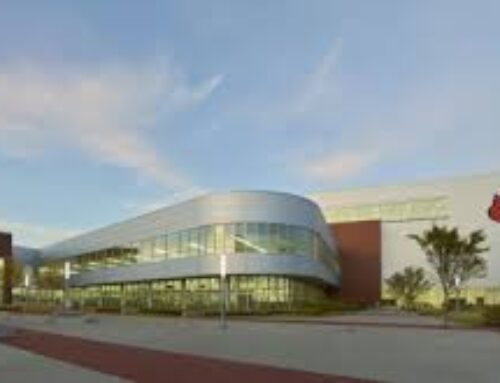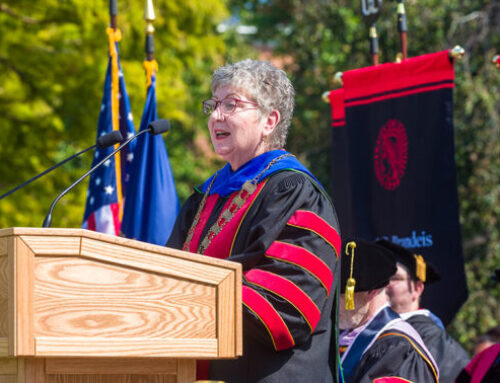
Medical marijuana dispensaries, like the one pictured above, have become a big business in Colorado.
By Lee Cole–
“I don’t like to put chemicals in my body.” It’s a phrase that’s become commonplace but signifies very little at face value. In order for the chemicals we ingest to affect us psychologically, they must interact with and interface with endogenous chemicals, which already exist in our brains. Heroin addicts don’t get high from heroin alone; they get high from dopamine present in the brain, and present in all of our brains, whose release is triggered by heroin and all opiate derivatives. Perhaps Salvador Dali had this is mind when he, in response to being asked if he used drugs, said, “I don’t do drugs. I am drugs.”
The legalization of cannabis in Washington and Colorado in this year’s election is only the latest chapter in the long, complicated story of America’s attempt to regulate various substances. We’ve tried and failed to prevent people from seeking pleasure and recreation from substances–as with our experiment in the prohibition of alcohol–for nearly our entire history. The problem seems to be that people, since time immemorial, have been using substances for medicine, pleasure and religious ecstasy, and the time period during which we have attempted to regulate this activity is very small relative to our history as a whole. We can ban heroin, alcohol or cannabis, but unless we ban dopamine, norepinephrine and serotonin, we will always have the potential and the desire to use psychoactive substances. Our brains are wired to “get high,” whether it’s on cannabis, sex, sugar or skydiving, for that matter.
America has a drug problem, a problem that defies simple solutions and easy answers. Because America’s drug problem involves the intersection of issues as disparate as poverty and religion, race and mental health, as well as economic interests, any comprehensive analysis of American attitudes toward drugs must take into account much more than marijuana. Recent interest in cannabis, especially after Colorado and Washington passed the most liberal cannabis laws in the world within the borders of a country where it is still federally illegal, has increased dramatically and support for legalization and decriminalization is at an all-time high, no pun intended. The problem must be examined broadly, however, looking not just at attitudes toward cannabis but at attitudes toward drugs and “getting high” in general. This first installment focuses on diagnosing America’s drug problem and its symptoms.
First of all, we have a schizophrenic and fundamentally confused notion about what the term “drug” really means. We have “drug stores” where one can purchase culturally approved substances sanctioned by the Food and Drug Administration as appropriate ways of treating some illness. Yet many of those very drugs, when they end up in the hands of someone who has no prescription for them, become bad drugs. The assumption, of course–a rather flimsy assumption–is that those who are prescribed drugs are treating a legitimate illness or symptom and those who “abuse” drugs, who are often of a lower socio-economic status, couldn’t possibly have any legitimate reason for taking them. In other words, when an older middle or upper class suburbanite downs a Valium with a cocktail, it’s medicine, but when a young person or someone near or below poverty line does the same, it’s drug abuse.
These inconsistencies and double standards point to the dichotomy of recreational versus medicinal, “getting high” versus treating a symptom, which is particularly relevant for cannabis. Cannabis has several approved medical uses, and yet is a schedule1drug according to the federal government, meaning that they deem it as having no medical value. Other drugs of note in schedule 1 include heroin and LSD. Cocaine is actually scheduled lower than cannabis.
One of the strangest and most blatantly racist aspects of our cannabis law is what we call it on the books: marijuana. We retained the Spanish word for specific reasons. “Marijuana” actually used to designate an altogether different plant, but when cannabis was first made illegal, government and law enforcement officials wanted it to be associated with Latinos and African Americans, as their rationale for making it illegal in the first place was that it caused those who smoked it, primarily Black and Latino men, to go into a frenzy and rape white women. This reasoning gradually changed as it was revealed by later research, and anyone’s eyewitness account who bothered to take note of the drug’s effect, that it more often than not made the user docile. During the Vietnam era, it was particularly popular among young, college-age kids who were against the war, and the war on drugs, as we know it today, was first waged by Richard Nixon to put kids in jail who disagreed with American policies. Since then, laws prohibiting cannabis have been an incredibly convenient way for affluent, mostly white, Americans to put minorities, the young and the impoverished in prison and away from their communities. To this day, the illegality of cannabis provides an excuse for law enforcement officials to stop, harass and often arrest minorities. And why wouldn’t they? Without cannabis laws, many law enforcement officials would be out of work. Nonviolent drug offenders make up 60 percent of the prison population. To give that some perspective, consider that the number of Americans incarcerated for drug offenses exceeds the number of people incarcerated for any reason at all in Western Europe.
It is assumed that those who abuse drugs do so merely for pleasure, but multiple studies indicate that the rate of mental illness among drug users is high. If they are getting pleasure from taking drugs, it is because the drugs often provide some relief from their symptoms. In just the same way, a housewife taking an extra Xanax may believe that she is merely treating a symptom, but the relief from anxiety is bound to be pleasurable. The same can be said for cannabis. Many cannabis users self-medicate with the plant, especially if they have no access to adequate health care or a doctor that could prescribe an undoubtedly more harmful pharmaceutical. Furthermore, people who may benefit from psychotherapy or regular visits to a doctor never get the chance because they are marginalized as drug users and often thrown in prison.
A number of measures could be put in place to not only reduce the number of incarcerated nonviolent drug offenders but also reduce drug addiction rates, but it requires a change of attitude toward drugs and the notion of “getting high.” Until then, we will remain addicted to prohibition and demonizing drugs and drug users rather than trying to understand them.
Read on: Getting High Part 2: A different way of approaching addiction and mental healthcare is needed to solve America’s drug problem
[email protected]
Photo courtesy THCfinder.com






